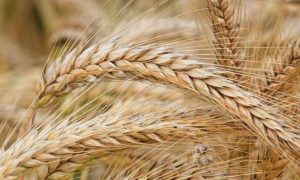Nigeria’s Paddy rice, maize, soybean production to decline 13% in 2024

The AFEX 2024 Wet Season report projects a 13% combined decline in Nigeria’s staple crop production, with maize down by 5.6%, paddy rice by 2.6%, and soybean by 4.8%. Contributing factors include high fertilizer costs, adverse climate conditions, and reduced farm sizes. Maize prices have risen nearly 90%, impacting feed costs, while rice consumption has surged by 25%, straining production.
The average production rate of paddy rice, maize and soybean – three major staples in Nigeria’s local diet – is projected to decline by a combined average of 13 percent due to high cost of fertilisers and climate conditions.
According to the AFEX 2024 Wet Season report, maize production in Africa’s most populous nation is projected to decline in 2024 by 5.6 percent while paddy rice is projected to fall by 2.6 percent and soybean by 4.8 percent.
“Maize production is projected to decline by 5.6 percent, resulting in an estimated total output of 11 million metric tons,” the report says.
The report notes that this decline can be attributed to several key factors, including a reduction in the cultivated land area, limited fertiliser usage, and adverse climatic conditions.
It notes that the cultivated land area for maize shrank by over 3 percent due to rising production costs during the planting season, prompting many farmers to reduce the size of their farms.
Findings have revealed that prices of maize have increased by 89.96 percent from N480,000 for a metric ton to currently about N910,000, influencing the prices of chicken feeds in the markets which have doubled in one year.
“Maize is a critical crop for food security across sub-Saharan Africa, particularly in Nigeria, where it plays an essential role in both the national economy and local diets,” the report says.
Maize, which is predominantly cultivated by smallholder farmers, is a significant source of food and cash to Nigerians.
However, owing to high demand for both consumption, livestock feed and industrial processing, its consumption is currently at par with production, which according to the AFEX report, highlights the need for increased production.
“Climate change has further worsened the situation, with prolonged dry spells in states like Taraba and flooding in states such as Kaduna significantly hindering maize production and availability across these regions.”
For rice, the report says that over the past decade, rice consumption in Nigeria has surged by 25 percent, while production struggles to keep pace.
It notes that “over the past decade, rice consumption in Nigeria has surged by 25 percent, while production struggles to keep pace.”
The decrease in paddy rice production, according to the report, is primarily driven by the high cost of fertilisers, which not only reduced rice yields but also led many farmers to switch to alternative crops such as sesame and sorghum, which require less fertiliser and are less expensive to cultivate.
BusinessDay had earlier reported that prices of rice have surged by 123 percent in one year from an average of N70,000 to N105,000 for a 50kg bag of parboiled local rice, while the same size for foreign now costs an average of N130,000.
As of 2022, rice production was about 8.5 million metric tons, according to data from the Food and Agriculture Organisation (FAO), but it is projected to decline 0.4 percent to 8.1 million in 2024.
Rice is the second-largest cereal crop and a crucial food security commodity in the country. Nigeria ranks fourth in global rice imports, accounting for about 5 percent of global rice trade, and is the 10th largest rice consumer worldwide.
Similarly, the report emphasises the importance of soybean to Nigeria’s consumable oil market.
“Often referred to as the ‘king of beans,’ soybean plays a crucial role in the global food supply, accounting for a significant portion of both direct and indirect protein consumed worldwide,” it says.
But because of a scarcity of Single Super Phosphate (SSP) – the appropriate fertiliser type crucial for soybean cultivation – due to its low nitrogen requirement, production of the bean is projected to decline by 4.8 percent.
The shortage has caused a sharp increase in SSP prices, limiting its availability for farmers, the report said.
“Consequently, many have turned to using less suitable fertilisers, negatively impacting yields,” the report adds.
Source Link : https://businessday.ng/agriculture/article/paddy-rice-maize-soybean-production-to-decline-13-in-2024/














